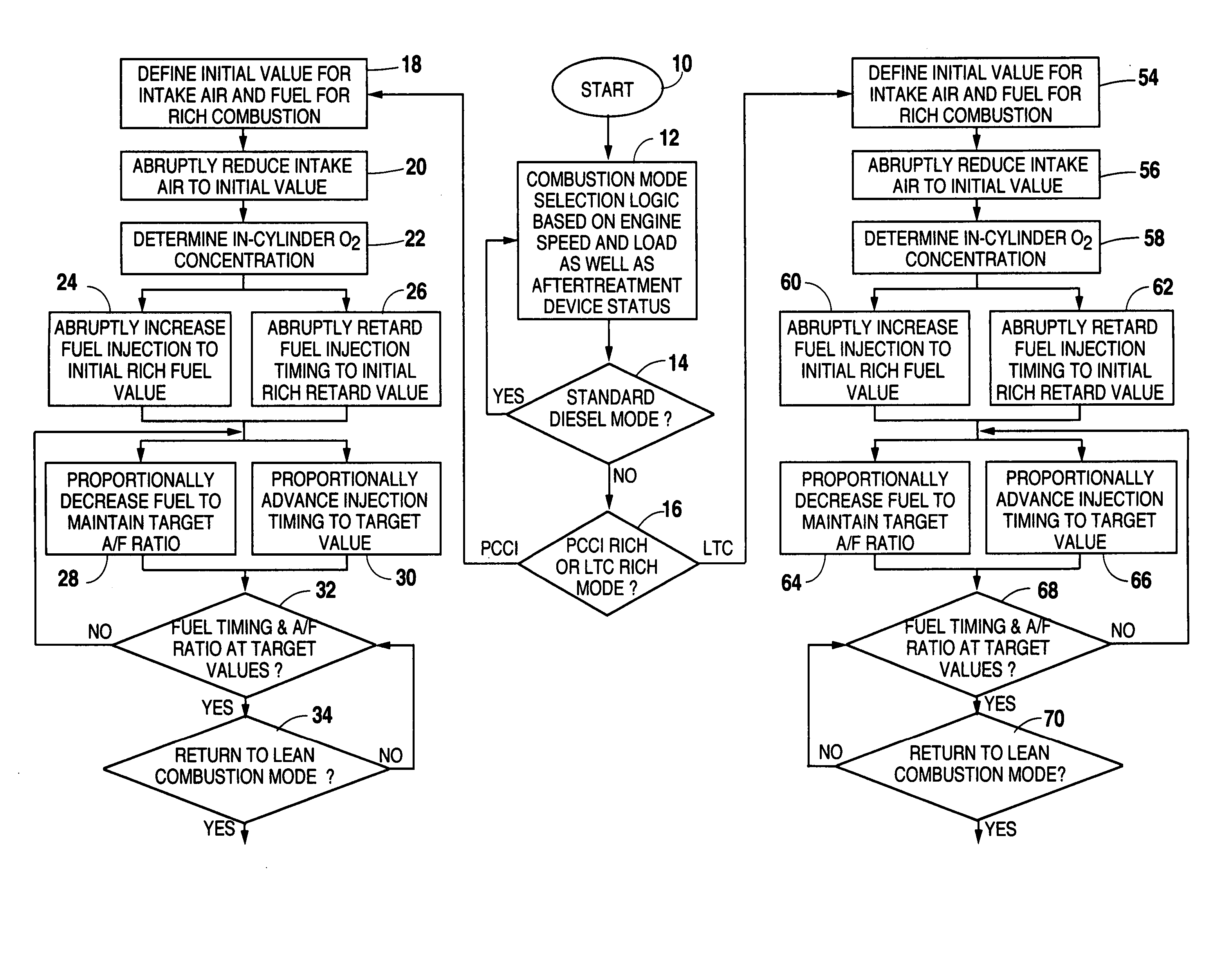Method for rapid, stable torque transition between lean rich combustion modes
- Summary
- Abstract
- Description
- Claims
- Application Information
AI Technical Summary
Benefits of technology
Problems solved by technology
Method used
Image
Examples
Embodiment Construction
[0021] The present invention describes methods to achieve fast air / fuel (A / F) ratio transitions from lean to rich combustion and, subsequently, rich back to lean combustion while maintaining constant engine torque, or load. The fastest way to reduce air flow is to close the intake throttle completely for a very short period of time, i.e., overshoot the desired air flow for rich combustion, and reduce boost and / or increase exhaust gas recirculation (EGR) if needed, while fuel quantity and injection timing are proportionally transitioned to the target parameters. “Intake air” as used herein refers to the actual charge provided to a cylinder during the intake stroke, and may consist of one or more components including ambient air, recirculated exhaust gas, and compressed air provided by the compressor stage of a turbocharger. However, rapid throttling of the intake air charge, by itself, will not produce the desired amount of air in each cylinder to provide the target value A / F ratio d...
PUM
 Login to View More
Login to View More Abstract
Description
Claims
Application Information
 Login to View More
Login to View More - R&D
- Intellectual Property
- Life Sciences
- Materials
- Tech Scout
- Unparalleled Data Quality
- Higher Quality Content
- 60% Fewer Hallucinations
Browse by: Latest US Patents, China's latest patents, Technical Efficacy Thesaurus, Application Domain, Technology Topic, Popular Technical Reports.
© 2025 PatSnap. All rights reserved.Legal|Privacy policy|Modern Slavery Act Transparency Statement|Sitemap|About US| Contact US: help@patsnap.com



